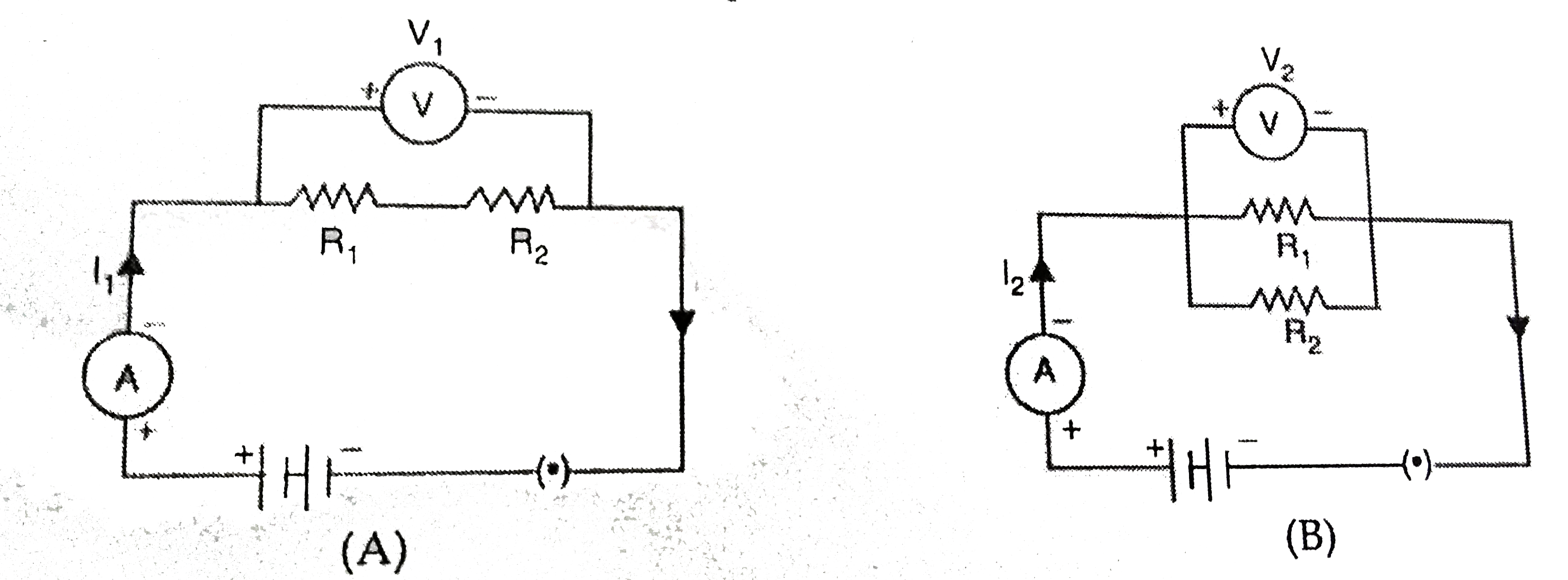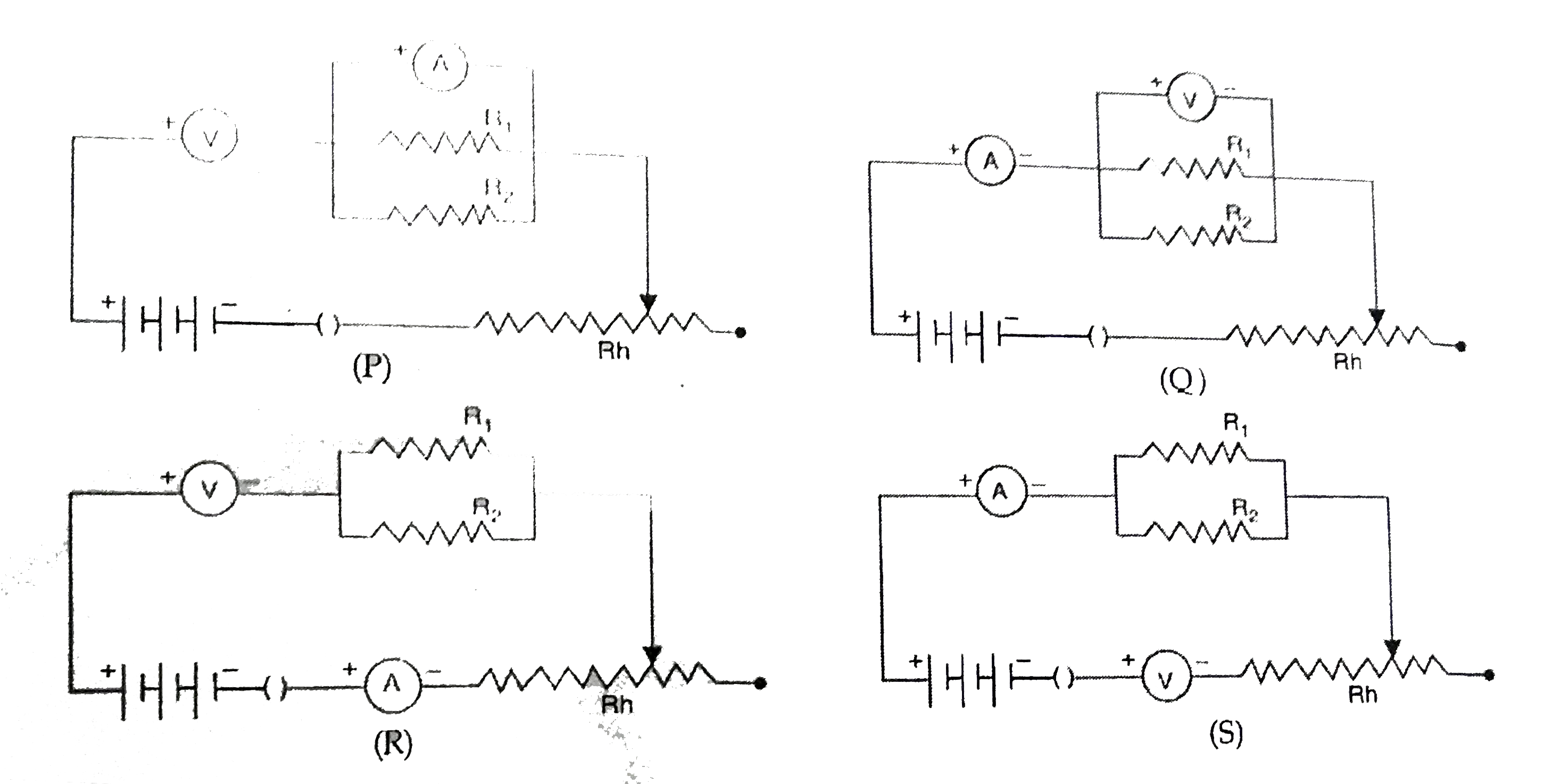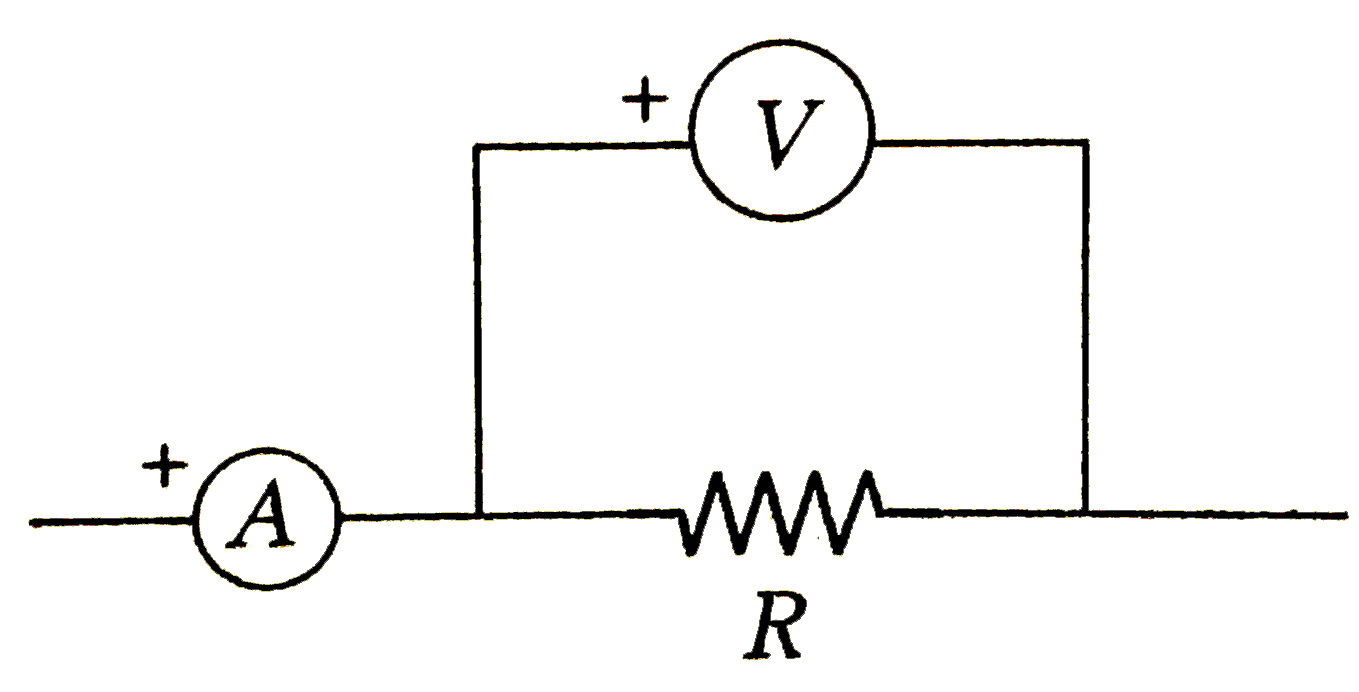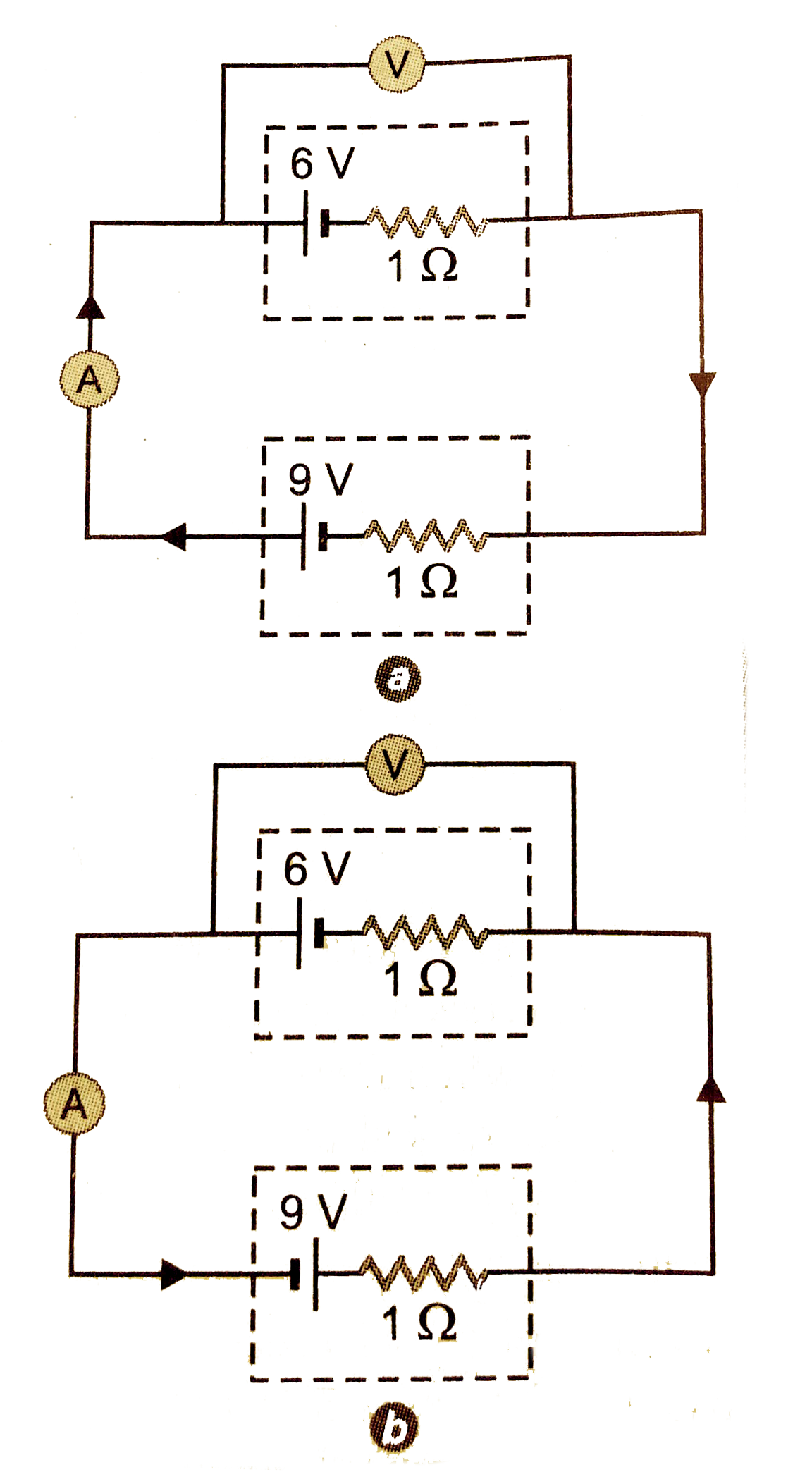A student using the same two resistors, ammeter, voltmeter and battery, sets up two circuits A and B connecting the two resistors first in series and then in parallel.

If the ammeter and voltmeter readings in the two cases be I1,I2 and V1,V2 respectively, he is likely to observe that :
I1=I2 but V1≠V2
I1<I2 but V1=V2
I1>I2 but V1=V2
I1=I2 and V1=V2
The correct Answer is:B
NA
Topper's Solved these Questions
- THE HUMAN EYE AND THE COLOURFUL WORLD BOOK - LAKHMIR SINGH & MANJIT KAURCHAPTER - THE HUMAN EYE AND THE COLOURFUL WORLD EXERCISE - Long Answer Type Question
3 Videos
- THE HUMAN EYE AND THE COLOURFUL WORLD BOOK - LAKHMIR SINGH & MANJIT KAURCHAPTER - THE HUMAN EYE AND THE COLOURFUL WORLD EXERCISE - NCERT Book
14 Videos
- THE HUMAN EYE AND THE COLOURFUL WORLD BOOK - LAKHMIR SINGH & MANJIT KAURCHAPTER - THE HUMAN EYE AND THE COLOURFUL WORLD EXERCISE - Long Answer Type Questions
2 Videos
- TEST PAPER 4BOOK - LAKHMIR SINGH & MANJIT KAURCHAPTER - TEST PAPER 4EXERCISE - SECTION A
10 Videos
Similar Questions
Knowledge Check
An ammeter and a voltmeter are connected in series to an ideal battery of emf E. If the ammeter reads I and voltmeter reading V, then
AV<εBthe resistance of voltmeter is V/ICP.D. across the ammeter is E-VDAmmeter and voltmeter have equivalent resistance = E/lAn ammeter and a voltmeter are joined in sereis to a cell. Their readings are A and V respectively. If a resistance is now joinding parallel with the voltmeter. Then
Aboth A and V will decreaseBboth A and V will increase.CA will increase V will dec rease.DA will decrease V will increase.Two resistors are connected (a) in series (b) in parallel The equivalent resistance in the two cases are 9ohm and 2ohm respectively. Then the resistances of the component resistor are
A2ohm and 7ohmB3ohm and 6ohmC3ohm and 9ohmD5ohm and 4ohm
Which of the two is connected in series: ammeter or voltmeter?
View SolutionAn ammeter, voltmeter and a resistor are connected in series to a cell and the readings are noted as I and V. If another resistor R is connected in parallel with a voltmeter, then
View SolutionTwo resistors are connected (a) in series (b) in parallel. The equivalent resistance in the two cases are 9 ohm and respectively. Then the resistances of the component resistors are
View SolutionConsider the following four circuits P, Q, R and S which have been set up to find the resultant resistance of two resistors combined in parallel :

The correct way of connecting the ammeter and voltmeter in the circuit is :
View SolutionAn ammeter A, a voltmeter V and a resistance R are connected as shown in the figure. If the voltmeter reading is 1.6V and the ammeter reading is 0.4A, then R is

View Solution

